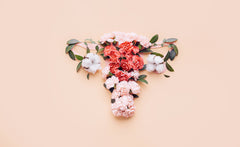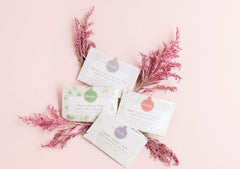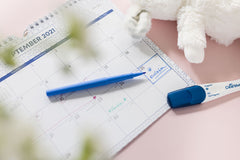Over 80 percent of people surveyed said they suffered pain from cramps while menstruating. You don't have to resort to medication if you suffer from period pain.
There are lots of natural solutions out there for you.
Let's go through our top tips for relieving period cramps naturally.
Apply Heat
Heat therapy is a tried-and-true method for relieving period cramps. Applying a heating pad or a hot water bottle to your lower abdomen or back can help relax the muscles and reduce pain. If you don't have a heating pad or hot water bottle, you can easily create your own by filling a sock with flaxseeds or raw rice and microwaving it until warm.
Additionally, taking a warm bath or shower can provide similar relief. Incorporate heat therapy into your routine by setting aside a few minutes each day to apply heat to the affected areas.
Eat Well
What you eat can have a significant impact on your menstrual cramps. Incorporating foods with anti-inflammatory properties into your diet can help reduce inflammation and alleviate pain.
Include fruits, vegetables (especially leafy greens), fatty fish like salmon, nuts, seeds, and healthy fats such as olive oil. These foods can help boost your immune system and reduce menstrual pain.
Aim for smaller, frequent meals to maintain stable blood sugar levels and minimize hormonal fluctuations.
Take Herbs and Herbal Teas
Herbs and herbal teas have been used for centuries to relieve menstrual cramps. Marshmallow root, raspberry leaf, and honeybush are known for their anti-inflammatory and soothing properties.
These herbs can help reduce pain and promote relaxation. Brew a cup of herbal tea and sip it throughout the day for relief. You can also consider incorporating herbal supplements or tinctures into your routine after consulting with a healthcare professional. Remember to choose high-quality herbs from reputable sources to ensure their effectiveness and safety.
Use Non-Toxic Period Products
Did you know that chemical byproducts are lurking in your tampons and cotton pads? So many disposables use chemical processing to bleach or sanitize the product without thinking about the many hormone disruptors left behind!
When you choose a silicone or charcoal bamboo solution for your period care, you’re giving your vagina a break from the toxic load, helping it steer clear of unwanted potential carcinogens and other compounds that can disrupt your cycle’s health!
Enjoy Epsom Salt Baths
Indulging in a relaxing Epsom salt bath can do wonders for relieving period cramps. Epsom salt contains magnesium, which helps relax muscles and reduce pain. Fill your bathtub with warm water and add a cup or two of Epsom salt.
Soak in the bath for 20-30 minutes, allowing your body to absorb the magnesium and alleviate cramps. Make it a regular part of your self-care routine by scheduling a soothing Epsom salt bath a few times a week during your menstrual cycle.
Up Your Water Intake
Staying hydrated is crucial for overall health, and it can also help reduce period cramps. Drinking an adequate amount of water throughout the day can help minimize bloating and water retention, common culprits of menstrual discomfort.
Additionally, consider incorporating celery juice into your routine. Celery is high in anti-inflammatory properties and has been shown to alleviate muscle cramps and lessen headaches. Drink 1-2 cups of fresh celery juice on an empty stomach in the morning to reap its benefits.
Lessen Caffeine Consumption
As we try to limit our caffeine consumption, one important reason affects the menstrual cycle. It can shorten your cycle to 25 days and lengthen your period because it constricts uterine blood vessels.
By creating a diuretic effect, you may also feel stronger crams. Caffeine also contributes to bloating, mood swings, anxiety, headaches, and fatigue. If you can limit your caffeine during your period, your body will thank you!
Stretch and Use Yoga Poses
Gentle stretching and practicing yoga poses can help alleviate period cramps by promoting relaxation and reducing muscle tension.
Try adaptive child's pose, which involves folding forward with extended arms to stretch the back and relax the hips.
Bound angle pose can soothe the digestive tract and provide an energy boost.
Cat and cow pose can also help relieve menstrual cramps by stretching the lower back and abdomen.
Set aside a few minutes each day to incorporate these poses into your routine, focusing on slow and mindful movements.
Sit in the Sun
Soaking up some sunshine can provide natural relief from period cramps. Sunlight exposure stimulates the production of vitamin D in your body, which is known to reduce inflammation and alleviate pain.
Take short breaks throughout the day to sit in the sun, especially during the morning or late afternoon when the sun's rays are less intense. Combine this with gentle outdoor activities like walking or light stretching to maximize the benefits. However, don't forget to protect your skin with sunscreen and take necessary precautions to avoid overexposure.
Naturally Relieving Period Cramps: Now You Know
There are so many different ways you can start relieving period cramps naturally. Try some of these methods, and determine what works best for your body.
Do you need more help with different feminine issues? Shop for more solutions on our website today.







